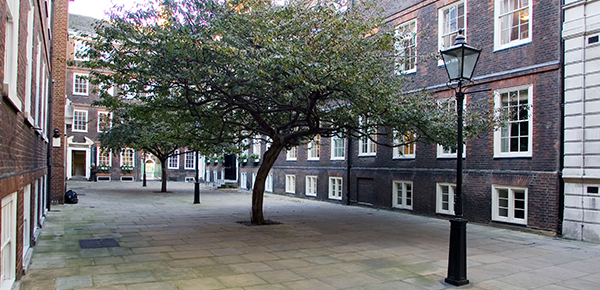Environmental Law News Update
July 8, 2020

In this latest Environmental Law News Update, Charles Morgan, Gordon Wignall and Natasha Hausdorff consider the extent of overflows from the sewerage system, the assessment of waste within the Transfrontier Shipment Regulations and new legislation making e-scooters legal.
More leaky pipes?
Much has been said recently about escapes from the amount of leakage from the pipes of water undertakers. Now attention is turning (not for the first time) to what might be seen as designed “leakage” from the pipes owned and operated by the sewerage undertakers (in most cases the same entities as the water undertakers in any particular region).
The two systems differ fundamentally. The inputs to the water supply system are capable of very precise control and such leaks as occur, however numerous, are unintended and represent some physical or operational failure within the system. Hence the strict liability of water undertakers for damage caused by escapes from their pipes (s.209, Water Industry Act 1991). In contrast, the combined system of sewers which endures from the Victorian era in this country is designed to overflow. That is because, as well as the (reasonably predictable) flows of domestic and industrial waste water the same pipes receive also the (highly variable and unpredictable) flows from rainwater drainage systems, the latter being capable of overwhelming the capacity of the pipes. To create a system capable of carrying to treatment all flows at all times would be at the least extremely expensive and probably physically impracticable. Hence the need for designed overflows, as mentioned in the context of bathing water quality in our blog on 24 June 2020. These are accordingly permitted by the Urban Wastewater Treatment Directive “during situations such as unusually heavy rainfall” (subsequently interpreted by the CJEU in Case C-301/10 Commission v UK as being limited in effect to “exceptional circumstances”).
The Guardian (1 July 2020) has established via environmental information requests that such situations arose on “more than 200,000 occasions last year”. Many overflows are still unmonitored. One enduring problem remains that of “deemed consents”. On the eve of privatisation in 1989 the Government woke up to the fact that many pre-existing overflows (c. 10,000) were not the subject of any formal consent at all. In order to ensure that the new sewerage undertakers were not born into “original sin”, the legality of such discharges was ensured by the wholesale granting of temporary consents to discharges from scheduled overflows, with only the broadest of conditions of general application. The plan was that these would be systematically replaced by more detailed bespoke consents more precisely defining the parameters of permitted discharges with due regard to their environmental impact. Until then, there was in effect “deemed consent” to the discharges in fact taking place.
The Environment Agency then set about the enormous task of individually “permitting” the overflows in question, in particular during the AMP3 period. However by 2010 approximately 4,000 remained the subject of “deemed consents”. The EA then sought to impose a new, improved set of “blanket” conditions but appeals by six sewerage undertakers resulted in a much diluted (*) standard suite of conditions being substituted by the Inspector determining the appeals. It seems unlikely that much progress has been achieved since given the strictures upon the EA’s expenditure and one suspects that these overflows are making a significant contribution to the numbers reported by The Guardian (or contributing further uncounted instances of overflow).
Enter in February 2020 the Sewage (Inland Waters) Bill 2019-21, a private members’ bill introduced by Philip Dunne MP and described as “A Bill to place a duty on water companies to ensure that untreated sewage is not discharged into rivers and other inland waters; and for connected purposes.” Its first (undebated) reading was on 5 February 2020 and its second reading will take place on 13 November 2020. No text of the bill is yet available. If it sets out to achieve what its title literally suggests, then it appears to be seeking to go further than the Urban Waste Water Directive by imposing an absolute prohibition without even the “get-out-of-jail-free” card of “exceptional circumstances”. Watch this space.
*yet another aqueous metaphor, sorry.
Transfrontier Shipment Regulations
In a criminal prosecution, what evidence is admissible to show that the process of recovery of waste at a receiving plant is relevant for the assessment of its waste characteristics when it is exported?
This was the key question of the recent Court of Appeal decision in R. v. Biffa Waste Services Ltd [2020] EWCA Crim 827 (3 July 2020), Biffa having appealed against two convictions contrary to the Transfrontier Shipment Regulations 2007.
Biffa had sorted out mixed household waste received at its Edmonton plant. It then sold consignments of the waste on as green list scrap paper to China. On examination at Felixstowe, the consignments were found to contain a quantity of soiled nappies, incontinence pads, sanitary towels and other contaminants.
The prosecution explicitly relied solely on the argument that the material being exported was household waste (a Y46 categorisation). Although household waste can become green list waste, whether there has been such a transformation is a question of the quality of the sorting process which takes place in the country of export. Exportation begins when a consignment starts its journey.
It is perhaps easy now, with the benefit of hindsight, to say that the legal outcome was clear-cut once the Crown had pinned its colours to a prosecution on the basis that what was consigned was household waste (given the detailed wording of the underlying EU Regulation, 1013/2006). This is because the export of household waste to a country such as China (and other ‘non-OECD’ countries) is expressly prohibited.
That said, part of the notes to the EU Regulation specify that B3020 and other green list waste is only prohibited for export if contamination levels “[prevent] the recovery of the waste in an environmentally sound manner”. The Holy Grail of a defence to a prosecution is to be able to argue that recovery of such waste in the country of importation is therefore relevant to a criminal tribunal’s assessment. However, as the Court of Appeal has bluntly confirmed, the Regulation cannot be read to import this defence, available only in respect of one type of waste as categorised under the Regulation (i.e. green list waste) into that section of the Regulation which concerns other riskier types of wastes (in this context, household waste). Ultimately, this is by reason of the classification system which applies under the exports prohibition as mapped out by Article 36 (in particular under Article 36(1)(b) as distinct from 36(1)(g)).
The Court of Appeal has also gone on to provide guidance, should a tribunal of fact ever decide that waste material, once sorted by the exporter to become a green list waste (such as waste paper), nevertheless contains a small quantity of contaminants. In such a case, evidence may be admissible to show that the nature and character of the contaminants is such that recovery of the waste will not be impeded in an environmentally safe manner. This would protect a shipper where the tribunal might be offended by the nature of the contaminants (such as soiled nappies). (This was not the type of case which the court was considering.)
R. v. Biffa Waste Services Ltd does not provide a particular gloss or clarification on the ECJ judgment in C-654/18, Interseroh (recently covered in this blog). That case too, however, included speculation as to the point at which contaminants might cease to be considered de minimis, and also with the problem whether the recovery process is relevant to the classification of waste when exported.
The judgment is of interest for other reasons. First, it sets out the judge’s direction as to the factual assessment to be carried out. Secondly, it shows the manner of the dismissal of Biffa’s appeal against the judge’s ruling that Biffa’s previous convictions could be adduced to the jury in order to correct the false impression a witness had given that it was not the sort of company to commit an offence, whilst at the same time avoiding the risk of any unfair prejudice which might have arisen from evidence about the company’s various previous convictions (s.105, Criminal Justice Act 2003).
Rental e-scooters made legal with legislative revisions prompted by pandemic
This week rental e-scooters became legal on roads in Great Britain in a concerted effort to ease pressure on public transport during the pandemic. In order to help support the green restart of local travel, trials will soon be operational, following the changes to legislation, which came into force on 4 July 2020.
E-scooters have been found to fall within the definition of “motor vehicle” under Section 185(1) of the Road Traffic Act 1988 (RTA), as “a mechanically propelled vehicle intended or adapted for use on roads” (DPP v Saddington [2000] 10 WLUK 691). The Department for Transport (DfT) this week published guidance for e-scooter-for-hire firms.
The e-scooter will continue to fall within the statutory definition of a “motor vehicle”, as a new sub-category providing that it:
- is fitted with no motor other than an electric motor with a maximum continuous power rating of 500W and is not fitted with pedals that are capable of propelling the vehicle;
- is designed to carry no more than one person;
- has a maximum speed not exceeding 15.5 mph;
- has 2 wheels, 1 front and 1 rear, aligned along the direction of travel;
- has a mass including the battery, but excluding the rider, not exceeding 55kg;
- has means of directional control via the use of handlebars that are mechanically linked to the steered wheel; and
- has means of controlling the speed via hand controls and a power control that defaults to the ‘off’ position.
Vehicle orders will be issued under s44 and s63(5)–(7) of the RTA for vehicles of particular operators assessed as being suitable to participate in trials. The approach to regulation is similar to that established for electrically assisted pedal cycles (EAPCs).
Under the new regime, local authorities and devolved administrations in England, Scotland and Wales can allow or run e-scooter sharing schemes in their areas as part of 12-month trials. Some 50 local authorities have expressed an interest to the government in having e-scooter trials, which were originally meant to run in 2021, but have been brought forward to encourage alternatives to public transport.
The vehicles are banned on pavements and limited in speed. There is a recommendation, but not a requirement, that riders wear helmets. Riders under the schemes will need a full or provisional car, motorcycle or moped licence to use the vehicles, and they must be aged 16 or over. Privately owned e-scooters remain illegal on roads. The DfT said in a statement that the regulations only cover rental schemes “to avoid a flood of poor-quality scooters onto the streets”.
Covid-19 Guidance Tracker: Environment
Please also have a look at the Environment section of our Covid-19 Guidance Tracker which tracks the official guidance being published in a wide range of sectors including coverage of the environment sector.
To keep up-to-date follow us on Twitter @6pumpcourt or click here to subscribe to the mailing list. If you have any comments or suggestions please contact Bridget Tough at bridget.tough@6pumpcourt.co.uk


